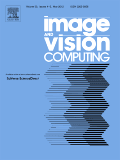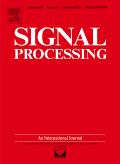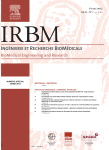
SIGNAL PROCESSING-IMAGE COMMUNICATION
metrics 2024
Unveiling the Future of Visual Technology
Introduction
SIGNAL PROCESSING-IMAGE COMMUNICATION, published by Elsevier, is a leading journal in the fields of Computer Vision, Signal Processing, and Electrical Engineering. With an impressive range of Quartile rankings in 2023, including Q1 in Electrical and Electronic Engineering and Q2 in Signal Processing, this journal is vital for researchers and professionals seeking the latest advancements and comprehensive studies in image communication technologies. Issued in the Netherlands, SIGNAL PROCESSING-IMAGE COMMUNICATION has been an essential resource since its inception in 1989, fostering innovation and collaboration among academia and industry. The journal provides a platform for high-quality peer-reviewed research, addressing significant challenges and solutions in the convergence of image processing and communication. Although currently not an Open Access journal, it offers subscription options that ensure a broad dissemination of groundbreaking knowledge. With a robust reputation reflected in its Scopus ranks, this journal serves as an indispensable reference for students and experts aiming to stay at the forefront of developments in this dynamic field.
Metrics 2024
 0.85
0.85 3.40
3.40 3.30
3.30 99
99Metrics History
Rank 2024
Scopus
IF (Web Of Science)
JCI (Web Of Science)
Quartile History
Similar Journals

IMAGE AND VISION COMPUTING
Pioneering research at the intersection of vision and computation.Image and Vision Computing, published by Elsevier, serves as a leading international journal focused on the dynamic fields of computer vision, pattern recognition, and signal processing. With its esteemed Q1 category rankings in these areas and an impressive standing in Scopus metrics, where it ranks 19th in Computer Vision and 23rd in Signal Processing, this journal has firmly positioned itself at the forefront of academic research and innovation. Established in 1983, it continues to publish cutting-edge research that drives advancements in technology and applications across various domains. The journal is committed to disseminating high-quality, peer-reviewed articles that address significant challenges and propose novel solutions, making it an essential resource for researchers, practitioners, and students alike. While not an open access journal, Image and Vision Computing offers a wealth of valuable insights into the ever-evolving landscape of visual computing technologies.

Signal Image and Video Processing
Exploring Breakthroughs in Signal AnalysisSignal Image and Video Processing, published by Springer London Ltd, is a cutting-edge academic journal dedicated to the fields of electrical and electronic engineering and signal processing. With an ISSN of 1863-1703 and an E-ISSN of 1863-1711, this journal plays a pivotal role in disseminating innovative research findings from 2007 to 2024, boasting a commendable Q2 ranking in its respective categories. Located in the United Kingdom, the journal attracts a diverse readership of researchers, professionals, and students eager to explore advancements in signal processing technologies and their applications in imaging and video analysis. Although it does not offer open access, its rigorous peer-review process ensures the publication of high-quality, impactful research, evident by its respectable rankings within Scopus in both electrical engineering and computer science domains. The journal serves as vital resource for those aiming to stay at the forefront of technological developments and research in image and video processing.

Frontiers in Signal Processing
Shaping Tomorrow's Signal Processing LandscapeFrontiers in Signal Processing is a pioneering open access journal published by FRONTIERS MEDIA SA that has been a key player in the field of signal processing since its launch in 2021. With an E-ISSN of 2673-8198, this journal aims to foster innovative research and contribute to advancements in various signal processing applications, from audio and image processing to telecommunications and biometrics. As a platform for researchers, professionals, and students, it provides a rigorous peer-review process along with wide dissemination of high-quality articles, making groundbreaking findings freely accessible to a global audience. The journal’s commitment to open access ensures that knowledge is not confined by paywalls, thereby empowering the scientific community to accelerate discovery and learning. With a comprehensive scope that encompasses theoretical insights and practical applications, Frontiers in Signal Processing is poised to play a vital role in shaping future developments in this dynamic field.

Jordanian Journal of Computers and Information Technology
Catalyzing Academic Excellence in Computing ResearchJordanian Journal of Computers and Information Technology, published by Princess Sumaya University and SRSF, stands as a significant platform for scholarly research in the realm of computer science, particularly in topics related to emerging technologies and information systems. With its Open Access model initiated in 2015, the journal facilitates global access to high-quality research findings, embodying the principles of knowledge sharing and academic collaboration. The journal's ranking in the Q3 category of Computer Science (miscellaneous) and its placement in the 54th percentile of Scopus' General Computer Science rankings underscore its growing reputation among researchers and professionals alike. Situated in Amman, Jordan, the journal actively contributes to the regional and international discourse on computing methodologies, applications, and innovations, making it an indispensable resource for scholars seeking to advance their understanding and engage with contemporary issues in technology.

EURASIP Journal on Advances in Signal Processing
Empowering Research in Electrical Engineering and Beyond.EURASIP Journal on Advances in Signal Processing, published by Springer, is a premier open-access journal that has been at the forefront of research in the field of signal processing since its inception in 2001. With a focus on advancing the disciplines of Electrical Engineering, Hardware and Architecture, and Signal Processing, this journal plays a crucial role in disseminating innovative findings and facilitating collaboration among academics and industry professionals. Ranking in Q2 for Electrical and Electronic Engineering and Q3 in both Hardware and Architecture and Signal Processing as per the 2023 category quartiles, it highlights the journal's commitment to high-quality research. The journal is indexed in Scopus, reflecting its reputable standing within the global research community. Researchers, professionals, and students are invited to contribute to and benefit from the wealth of knowledge and advancements presented in each issue, furthering their understanding and application of state-of-the-art signal processing techniques.

Image Processing On Line
Transforming insights into breakthroughs in image processing.Image Processing On Line (ISSN: 2105-1232, E-ISSN: 2105-1232) is a pioneering open-access journal published by IMAGE PROCESSING ONLINE-IPOL since 2011, dedicated to advancing the field of image processing through the dissemination of high-quality research and innovative methodologies. Based in France, the journal serves as a platform for researchers, professionals, and students to share insights and breakthroughs in the rapidly evolving domains of Signal Processing and Software. With its current ranking as Q4 in both categories according to the 2023 category quartiles, and a Scopus ranking highlighting its significance within the computer science field, the journal is focused on nurturing contributions that push the boundaries of image processing techniques. Accessible to a global audience, Image Processing On Line is crucial for those engaged in both theoretical explorations and practical applications, ensuring a collaborative repository of knowledge that fosters innovation and development in this vital area of technology.

SIGNAL PROCESSING
Unlocking the Potential of Signal AnalysisSIGNAL PROCESSING is a premier academic journal published by Elsevier, dedicated to advancing the field of signal processing. With an impressive impact factor and ranked in the Q1 category across various disciplines such as Computer Vision and Pattern Recognition, Control and Systems Engineering, Electrical and Electronic Engineering, and more, the journal stands as a highly respected resource within the academic community. Since its inception in 1979, SIGNAL PROCESSING has provided a platform for researchers and professionals to disseminate their findings on innovative algorithms, techniques, and applications related to signal analysis and processing, making significant contributions to both theoretical and practical aspects of the discipline. The journal is accessible through institutional subscriptions, ensuring that scholars and students can engage with cutting-edge research and foster advancements in technology and methodology. Readers can expect to find a wealth of articles that promote critical discourse and facilitate further research, making SIGNAL PROCESSING an essential reference for anyone involved in the fields of signal processing and related areas.

Journal of Imaging
Advancing the Future of Imaging TechnologiesThe Journal of Imaging, published by MDPI, is an esteemed open-access journal dedicated to advancing the fields of Computer Graphics, Computer Vision, and Electrical Engineering. Since its inception in 2015, this journal has established a significant presence in the academic community, reflected by its impressive rankings in Scopus, including a Q2 quartile in multiple categories such as Computer Vision and Pattern Recognition and Radiology. With a commitment to disseminating high-quality research, the journal offers a platform for innovative studies and practical applications, making it an essential resource for researchers, professionals, and students alike. Operating from its base in Basel, Switzerland, the journal continues to promote scholarly work that pushes the boundaries of imaging technologies, while contributing to the global discourse in its respective fields. The open-access model ensures that valuable research is readily available, fostering collaboration and knowledge-sharing across disciplines.

Journal of Real-Time Image Processing
Exploring the Dynamics of Real-Time Visual TechnologiesJournal of Real-Time Image Processing, published by SPRINGER HEIDELBERG, is a renowned peer-reviewed journal dedicated to the field of real-time image processing. With an ISSN of 1861-8200 and an E-ISSN of 1861-8219, this journal operates under a rigorous academic framework, ensuring high-quality publications that cater to both theoretical and practical advancements in the discipline. Since its inception in 2006, it has continually evolved, maintaining a Q2 ranking in Information Systems according to the 2023 Category Quartiles. This journal ranks #103 out of 394 in Scopus for Computer Science - Information Systems, positioning it within the top 27% percentile, which underscores its significance in the research community. Its focus on the intersection of image processing and real-time applications makes it a vital resource for researchers, professionals, and students eager to explore and contribute to cutting-edge developments in the field. Though it does not currently offer open access, the journal's comprehensive scope and commitment to disseminating impactful research make it an essential platform for advancing knowledge in real-time image processing.

IRBM
Catalyzing Transformative Ideas in Life Sciences ResearchIRBM, published by Elsevier Science Inc, stands at the forefront of research in the domains of Biomedical Engineering and Biophysics, boasting impressively high rankings with a Q1 category in both fields according to the 2023 evaluations. With an effective focus on cutting-edge innovations and methodologies, IRBM provides a vital platform for researchers, professionals, and students alike seeking to disseminate and access groundbreaking findings and developments. Its strong presence in the Scopus database, with ranks of #12 in Biochemistry, Genetics and Molecular Biology and #42 in Biomedical Engineering, places it in the top percentile of impactful journals in the field, making it a crucial resource for advancing knowledge and fostering collaboration. While the journal maintains a traditional subscription model, it continues to attract a diverse readership eager for insightful studies and reviews that push the boundaries of science and engineering. With a projected convergence of years extending to 2024, IRBM promises to remain a significant contributor to the ongoing dialogue in the life sciences.